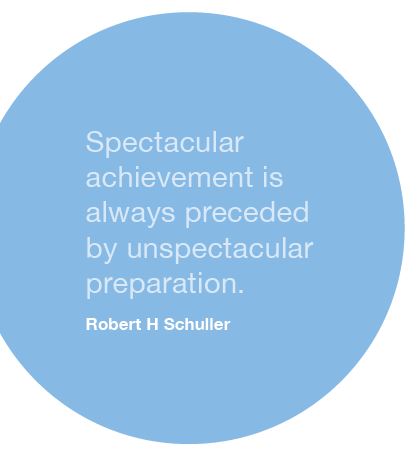If English isn’t your first language it can be very daunting to have to stand up and make a presentation in English. Most people find public speaking difficult in their native language. It’s even harder when it’s not your first language. It can be even worse if you have a very pronounced accent or a very quiet voice. So here are some suggestions.
Practice
You will need to spend more time practicing. Present the talk to the mirror, to the dog, to your friends, to anyone. The more often you practice, the easier it will become.
 Spend extra time on complicated words and phrases. Get someone to help you with pronunciation of difficult words. You might need to write them out in a way you can understand them. Many words are pronounced differently from how they look written down.
Spend extra time on complicated words and phrases. Get someone to help you with pronunciation of difficult words. You might need to write them out in a way you can understand them. Many words are pronounced differently from how they look written down.
You must have written notes. These are your fall-back if you get confused or anxious.
Take every opportunity to speak
It’s tempting to avoid speaking; to tell yourself I’ll wait until my English is better, or my results are clearer, or whatever. The reality is that the only way to get better at speaking is… to speak. So take small less threatening opportunities when they arise, for example, speaking at a team meeting, a lab meeting, with friends, at a course.
Accents
If you have a particularly strong accent that might be difficult to understand, then slow down your delivery. You can also put more words on your PowerPoint slides or handouts. This way your audience can check the written material if they get lost. Don’t put everything on PowerPoint. Just the complicated bits.
Volume
Many people have quiet voices. This is okay in day-to-day conversations but when you are making a presentation you need to be heard. Think about whether the person at the back of the room can hear you easily.
In general most people need to speak more loudly. You need to practice doing this so it feels more comfortable to you. At the beginning you will feel like you’re shouting, but keep at it. After a little practice you will work out the volume you need. If you want to check this out, get a friend to go to the venue with you and stand at the back while you speak. They need to be able to hear you clearly. Remember when the room is full of people there will also be background noise.
Understanding questions
Most of us are anxious when presenting, which means we don’t have many brain cells free to listen to questions and think up appropriate responses. This is even harder when you’re working in a second language. Firstly, you have to try and understand the question, then think of the answer and put it into words.
If you haven’t understood the question you could ask the person to repeat it or put it into different words. For example:
“I’m not sure I fully understand your question. Could you rephrase it please?”
If you are not confident about understanding the questions one alternative is to bring someone with you who can translate for you or clarify it in words you understand. Or ask someone in the audience to clarify it.
For example:
“I’m sorry. I’m not understanding the question fully. Can someone help?”
The good thing about being a non-native speaker is that your audience will probably understand and be more forgiving of any slips.
Extract from Presenting your Research with Confidence, Hugh Kearns


Not that anyone asked, but for presenters with this problem (or strong regional accents [I’m talking to YOU, Alabamans!]), liberal use of PowerPoint is your friend, because you can set it up so that whatever words or phrases you think might not be understood can be integrated into sentences in 36-pt Calibri Bold right next to you, as you’re saying them. It’s like close-captioning.
You don’t want your speech and the text on the slides to be identical (or even close) because it just seems canned.
But if you have trouble pronouncing, say, “leukocytes,” and you have a slide right there with the heading “TUMOR-INFILTRATING LEUKOCYTES” (and maybe a few bullet points), your audience will stay with you.
Don’t be afraid to use plenty of slides [1] [2].
Practice with them, of course.
___
[1] More unasked-for advice about slides: Do NOT put tables on the slides. Just don’t. Nobody CAN read them, nobody WANTS to read them. Figure out what argument you’re trying to get across with the table data, write it as a bullet point and use that. (Same for any graphs that can’t be easily read on a slide in the time it’s up.)
[2] More unasked-for advice about presentations: Consider making up an audience hand-out.
For one thing, if you’re really hell-bent on your audience seeing a table, that’s the place to put it (or the refs, or other supplementary data).
For another, you can put anything you want in the hand-out: your contact info, the abstract to whatever research you’re presenting, invitations to the presentation after-party, etc.
Good points.
Many thanks for your suggestion